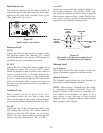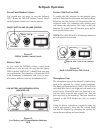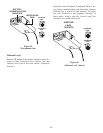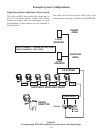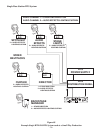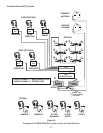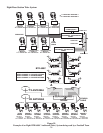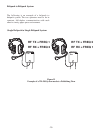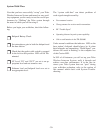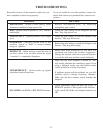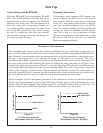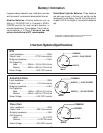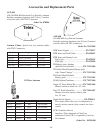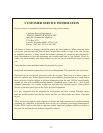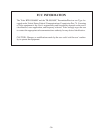
Tech Tips
Codes Settings and the BTR600C
While the BTR-600C and corresponding TR-600C
have over 65,000 different codes that may be se-
lected by the user, there are actually over 16 million
different codes in the units. The microprocessor in
each base station and corresponding beltpack has
two unique numbers programmed into them from
the factory. The external four code switch settings
are used in conjunction with these two internal,
non-accessible, numbers to encrypt and decrypt au-
dio sent to and from the units.
Frequency Interaction
Unfortunately, radio frequency (RF) channels can-
not be randomly selected for use in radio devices.
They must be selected to avoid known frequencies
in use, FCC restrictions on the location of devices,
and even interference between your own RF de-
vices. The channels selected by Telex for Radiocom
systems are chosen to minimum possible interfer-
ence. This is why it is always important to inform
Telex about frequencies of other Radiocom or other
RF devices that will be used with any additional
Radiocom equipment ordered.
-32-
Microphone Gain Adjustment
The microphone gain controls on the base station and beltpack are set to mid-levels by the factory. In
most cases this setting will work fine and only on loudest speech will the overmodulation (OM) indicator
light. However, in environments where the background noise is loud or the user has a strong/quiet voice,
the gain control will need to be adjusted. In Figure 52 the gain is set correctly. The user’s
root-mean-square (RMS) sound level is well below the OM threshold and only on a few loud peaks does
his or her voice flash the OM indicator light. Figure 53 displays the same gain setting as in Figure 52, but
brought into a high noise environment. The user’s voice now lights the OM indicator over half the time he
or she speaks due to the higher noise plus the user speaking louder. The result on the system is distortion
with possible “clipping” on louder speech. The microphone gain must be reduced. The same applies to a
user with a powerful voice. If someone sets the system mic gain to their voice and user has a much stron-
ger voice, then the gain will need to be reduced, even if the background noise is the same.
Always remember to set the microphone gain based on the situation and location in which the equipment
will be used. If the equipment is used on the field during a football game, set the gain based upon a loud
stadium, NOT the quiet stadium 2 hours before a game. If a production studio user has a quiet voice, set
the gain to their voice and NOT the stage hand’s loud voice who helped set up the system.
OM THRESHOLD
USER'S VOICE
NOISE
SOUND LEVEL, RMS
OM THRESHOLD
USER'S VOICE
NOISE
SOUND LEVEL, RMS
Figure 52
Low Noise Environment
Microphone Gain Set Correctly
Figure 53
High Noise Environment
Microphone Gain Set Too High



